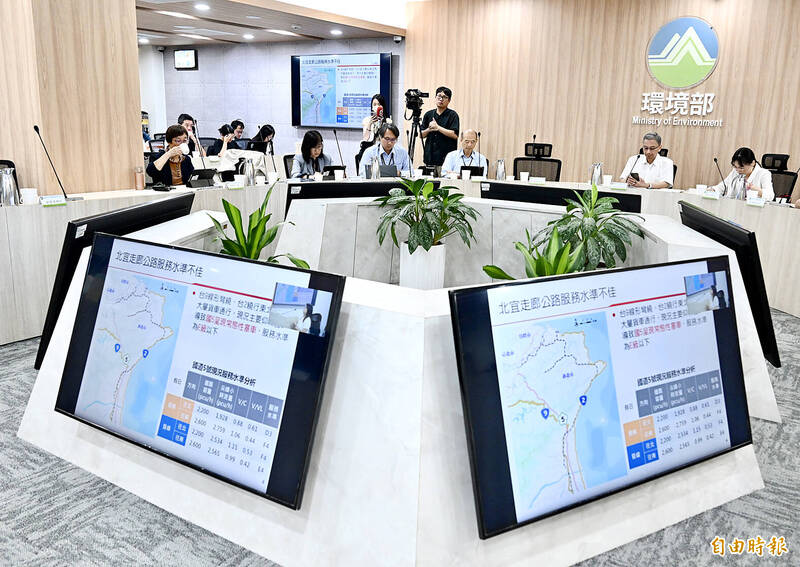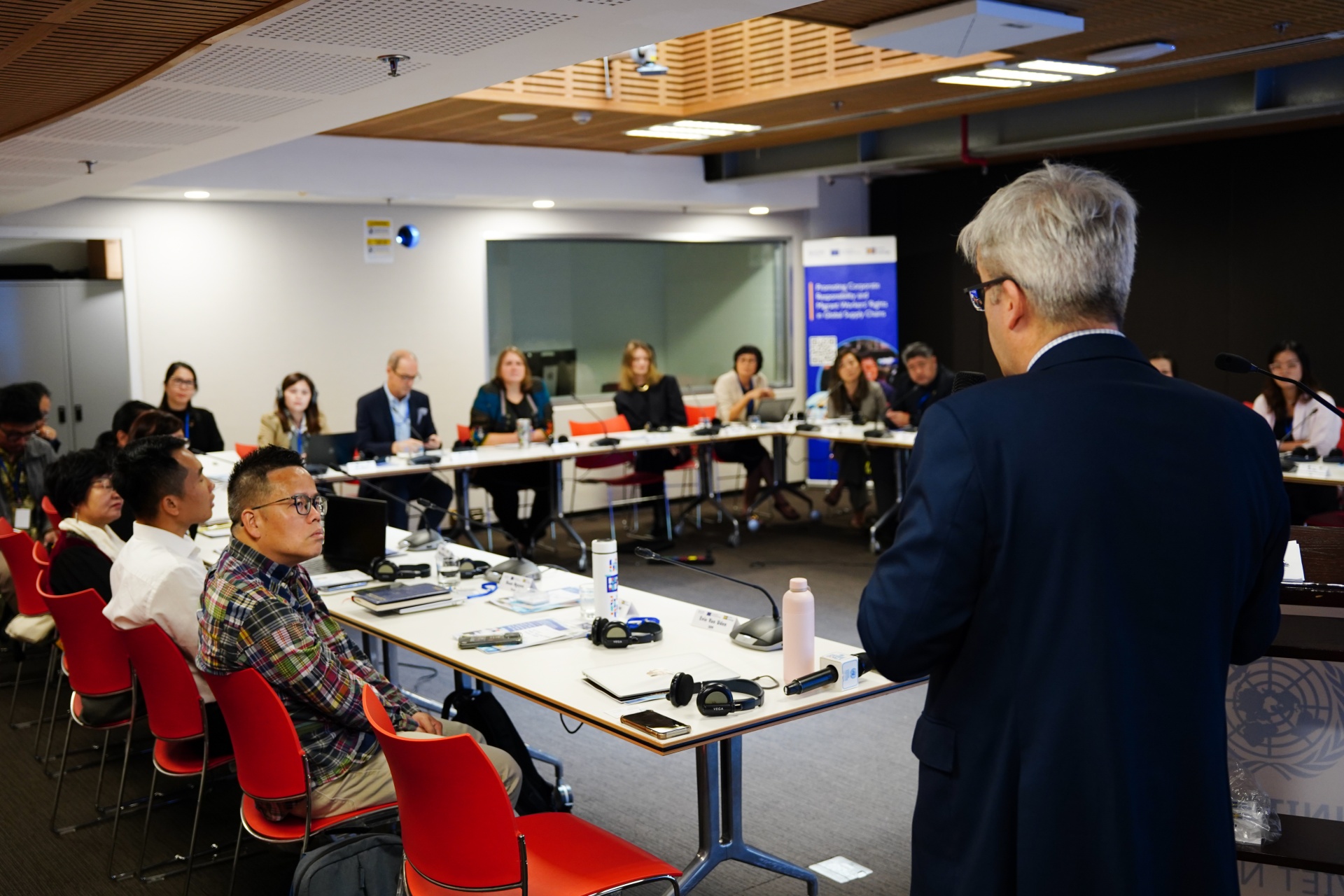Environmental groups say EIAs need reworking – Taipei Times

Report on Enhancing Environmental Impact Assessment Processes in Alignment with Sustainable Development Goals
Introduction: Aligning EIA with Global Sustainability Mandates
A public hearing convened by environmental organizations and attended by government officials has highlighted significant deficiencies in Taiwan’s Environmental Impact Assessment (EIA) system. Stakeholders have called for systemic reforms to enhance public participation, transparency, and developer accountability. These proposed improvements are critical for aligning national development practices with the United Nations Sustainable Development Goals (SDGs), particularly SDG 16 (Peace, Justice and Strong Institutions), which advocates for effective, accountable, and inclusive institutions at all levels, and SDG 11 (Sustainable Cities and Communities), which calls for participatory and sustainable planning.
Identified Deficiencies in Public Participation and Institutional Accountability
Civil society groups have identified several key areas where the current EIA process fails to meet the standards required for achieving SDG 16.7 (Ensure responsive, inclusive, participatory and representative decision-making). The primary concerns include:
- Lack of Mandatory Dialogue: A procedural change has removed the requirement for developers to respond directly to questions and concerns raised by civic participants during EIA review meetings. This undermines the principle of accountable and transparent governance (SDG 16.6).
- Insufficient Public Notification: Public hearing announcements are often limited to borough wardens and local government offices, failing to adequately inform residents who will be directly affected by proposed developments. This narrow approach hinders inclusive participation.
- Restrictive Participation Rules: The speaking time for members of the public is currently limited to three minutes per person, which is considered insufficient for substantive input.
- Delayed Public Involvement: Substantive public participation is often deferred until the second phase of the EIA process, limiting the public’s ability to influence fundamental project decisions, such as site selection and necessity evaluation.
Recommendations for a More Inclusive and Effective EIA Framework
To address these shortcomings and strengthen the EIA system’s contribution to sustainable development, environmental groups and experts have proposed a series of reforms. These recommendations aim to build multi-stakeholder partnerships (SDG 17) and ensure that development is environmentally sound and socially equitable.
- Restore Two-Way Communication: Immediately reinstate the previous practice requiring developers to provide direct, substantive responses to issues raised by the public during EIA meetings.
- Enhance Civic Engagement Protocols:
- Expand public notification systems to include modern methods, such as text messaging, to ensure comprehensive outreach to affected local residents.
- Establish a minimum participation rate for local residents in public hearings.
- Increase the allotted speaking time for each civic participant to a minimum of ten minutes.
- Strengthen Institutional Capacity and Transparency:
- Establish a government-funded think tank to independently analyze the validity of EIA processes and assist stakeholders in understanding complex technical reports.
- Introduce Artificial Intelligence (AI) technology to systematically review meeting minutes and verify that all public concerns are formally logged and addressed by developers.
Ministry of Environment’s Initial Responses and Future Outlook
In response to these concerns, the Department of Environmental Protection has reported several recent measures aimed at improving the EIA process. These actions represent initial steps toward creating more inclusive and participatory institutions as envisioned in SDG 16.
- As of July 1, the number of civic participants permitted to attend EIA meetings was increased to 20.
- On September 11, the ministry formally requested that EIA committee members ensure concerns raised by the public are addressed.
- An online platform has been launched to facilitate greater public participation and to require developers to post replies to public inquiries, enhancing transparency.
These measures are a positive development, though stakeholders maintain that further structural reforms are necessary to fully integrate the principles of sustainable development and participatory governance into Taiwan’s EIA framework.
SDGs, Targets, and Indicators Analysis
1. Which SDGs are addressed or connected to the issues highlighted in the article?
-
SDG 16: Peace, Justice and Strong Institutions
- The article’s primary focus is on reforming the Environmental Impact Assessment (EIA) system, which is a governmental and institutional process. The calls from environmental groups to “enhance the transparency and supervision of the system,” ensure accountability, and boost public participation directly relate to building effective, accountable, and inclusive institutions.
-
SDG 11: Sustainable Cities and Communities
- The EIA process is crucial for managing urban and regional development. The article discusses the need to properly notify and involve “local residents who would be affected by planned developments.” This connects to the goal of making human settlement planning more inclusive, participatory, and sustainable.
2. What specific targets under those SDGs can be identified based on the article’s content?
-
Targets under SDG 16
- Target 16.6: Develop effective, accountable and transparent institutions at all levels. The article highlights a lack of accountability, stating that developers are “not obligated to answer” questions from the public. The demand for the Ministry of Environment to “enhance the transparency and supervision of the system” and for developers to provide “proper responses” directly supports this target.
- Target 16.7: Ensure responsive, inclusive, participatory and representative decision-making at all levels. This is the central theme of the article. It criticizes the current system where “substantive public participation is not involved until the second phase of the EIA” and speaking time is limited to three minutes. The call to restore “two-way communication” and ensure public concerns are addressed aims to make the decision-making process more participatory and inclusive.
-
Targets under SDG 11
- Target 11.3: By 2030, enhance inclusive and sustainable urbanization and capacity for participatory, integrated and sustainable human settlement planning and management in all countries. The EIA is a key instrument for sustainable planning. The article’s proposals, such as improving public notification systems and setting a “minimum participation rate of local residents,” are aimed at enhancing the capacity for participatory planning in development projects that affect human settlements.
3. Are there any indicators mentioned or implied in the article that can be used to measure progress towards the identified targets?
-
Indicators for SDG 16 Targets
- Procedural Rules for Participation: The article mentions that the ministry now allows “up to 20 civic participants” and has released an “online platform to boost public participation.” The number of participants allowed and the existence of platforms for engagement are measurable indicators.
- Speaking Time Allotment: A clear indicator is the proposed change in “speaking time for each civic participant” from the current “three minutes” to “at least 10 minutes.”
- Accountability Mechanisms: The call for developers to be required to answer questions and the suggestion to use “artificial intelligence technology… to identify whether concerns raised during meetings are properly addressed” imply indicators related to the responsiveness and accountability of the process.
-
Indicators for SDG 11 Targets
- Public Notification Methods: Progress can be measured by tracking the method of public notification, moving from the current limited approach of informing “borough wardens and township or city offices” to a “wider approach… such as text messaging” to reach affected residents.
- Participation Rates: The proposal to set a “minimum participation rate of local residents” in public hearings is a direct, quantifiable indicator of inclusive planning.
- Institutional Support for Public Understanding: The call to establish a “think tank dedicated to examining the validity of the EIA process, and facilitating understanding of EIA reports among stakeholders” serves as an indicator of building capacity for meaningful public participation.
4. Table of SDGs, Targets, and Indicators
| SDGs | Targets | Indicators |
|---|---|---|
| SDG 16: Peace, Justice and Strong Institutions |
16.6: Develop effective, accountable and transparent institutions at all levels.
16.7: Ensure responsive, inclusive, participatory and representative decision-making at all levels. |
|
| SDG 11: Sustainable Cities and Communities | 11.3: Enhance inclusive and sustainable urbanization and capacity for participatory, integrated and sustainable human settlement planning and management. |
|
Source: taipeitimes.com

What is Your Reaction?
 Like
0
Like
0
 Dislike
0
Dislike
0
 Love
0
Love
0
 Funny
0
Funny
0
 Angry
0
Angry
0
 Sad
0
Sad
0
 Wow
0
Wow
0



















































.jpg.webp?itok=0ZsAnae9#)

























